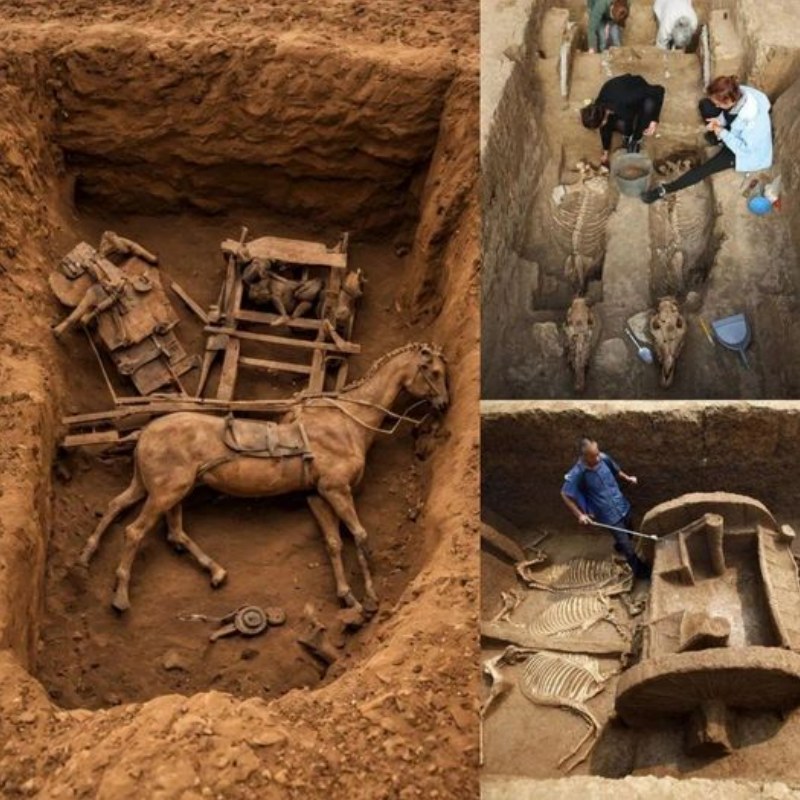A 2,500-year-old chariot, complete with a driver and horses, was discovered by archaeologists
It could have been as long as 700 years before the birth of Jesus Christ when these horses were moved to greener pastures, and no one had ever seen them until now.Tuesday, April 23, 2024

Archaeologists have painstakingly uncovered nearly 3,000-year-old remains of wooden horses and chariots in a Zhou Dynasty tomb in Luoyang, Henan Province, China.
The completed excavation unearthed four horse and chariot pits, dating back to 770 BC. The pits have well-preserved evidence of bronzeware and pottery from the early Western Zhou Dynasty.
Although this is a much smaller tomb than the famous “terracotta army” found in 1974 in Lintong District, this find has not been disturbed while buried and has not suffered the ravages of grave robbers.
Archaeologists believe that the tomb belongs to a well-known official during the dynasty: the pottery, metal weapons and inscriptions match that of a man of medium importance.
Aside from the artifacts themselves, the tomb is an exciting discovery for historians, as it provides unquestionable information about burial customs in the early Western Zhou Dynasty.
The unearthed tomb is a vertical earthen tomb, very common in that period.
Due to the age of the site, the traditionally wooden coffin and body found within have long since charred.
But by far the most valuable discovery is the complete set of chariots and horses, of all shapes and sizes.
Animal lovers can breathe a small sigh of relief: Archaeologists say the position of the horses, lying on their sides, shows the animals were slaughtered before burial and not buried alive.
At the time of this official’s death, large-scale irrigation projects were being instituted throughout China and the country’s writing system was being further developed.
It was also the era of the great ancient Chinese philosophers, including Confucius, Mencius and Zhuangzi.
Many nearby tombs contain fragments similar to the Luoyang find, but most have been emptied of their funerary relics by robbers.